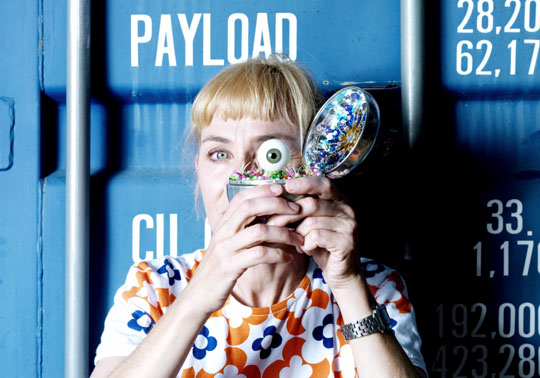In addition to exhibition and workshop components, the recently opened International Festival for Arts and Media Yokohama 2009 (also known as CREAM) features a monthlong screening program of international feature-length and short films as well as prize-winning submissions to the CREAM Competition, which was open to works in all moving-image genres by amateur and seasoned artists alike.
Born in 1962, the Swiss artist Pipilotti Rist is among the headliners of the screening program, which included the Nov. 1 Asian premiere of her first feature film, "Pepperminta" (2009). Rist is known for making sensual, psychedelic videos and installations that explore how media shapes perception of the human body and its relationship to social and natural environments. "Pepperminta" builds on the artist's previous work, following the eponymous title character as she uses color — paint, flowers, fruit, food dye and even menstrual blood — to break down social constraints and upend authority.
Rist has had several exhibitions in Japan, including solo shows at Tokyo's Shiseido Gallery and Hara Museum of Contemporary Art and the Genichiro-Inokuma Museum of Contemporary Art in Marugame, Kagawa Prefecture. The Japan Times met with her in Yokohama to discuss her transition from video to film and her use of the human body as a theme in her work.


















With your current subscription plan you can comment on stories. However, before writing your first comment, please create a display name in the Profile section of your subscriber account page.